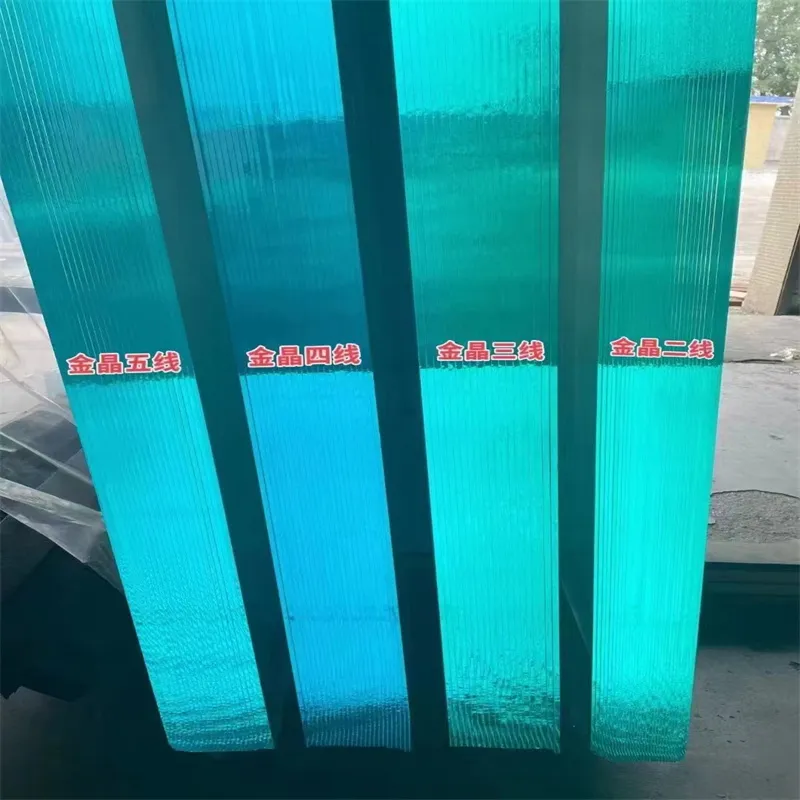10 月 . 10, 2024 20:53 Back to list
Understanding Laminated and Toughened Glass for Enhanced Safety and Durability
Laminated Glass and Toughened Glass Understanding Their Properties and Applications
Glass has been a crucial material in architecture, automobile manufacturing, and various industrial applications due to its aesthetic appeal and versatility. Two notable types of glass that have gained significant attention are laminated glass and toughened glass. Each type has distinct properties, advantages, and applications that make them suitable for specific uses. This article aims to explore these two types of glass in detail, highlighting their manufacturing processes, benefits, and potential applications.
Laminated Glass
Laminated glass consists of two or more layers of glass that are bonded together with an interlayer, usually made of polyvinyl butyral (PVB) or ethylene-vinyl acetate (EVA). The interlayer provides structural integrity and enhances safety. The process typically involves applying heat and pressure to fuse the layers together.
One of the most significant advantages of laminated glass is its ability to hold together even when shattered. The interlayer prevents the glass from breaking into sharp shards, thereby reducing the risk of injury. This characteristic makes laminated glass an ideal choice for safety glass applications, such as windshields in automobiles and glass facades in buildings. Furthermore, laminated glass also offers excellent sound insulation properties, making it suitable for use in environments where noise reduction is a priority.
Additionally, laminated glass can provide enhanced UV protection. The interlayer blocks a significant portion of ultraviolet rays, protecting both interiors and occupants from harmful radiation. As a result, it is often used in skylights and large windows in commercial buildings.
Toughened Glass
laminated glass and toughened glass

Toughened (or tempered) glass, on the other hand, is produced by heating regular glass to a high temperature and then rapidly cooling it. This process increases the glass's strength, making it much less likely to break under stress. If toughened glass does shatter, it breaks into small, blunt pieces, minimizing the risk of injury.
The primary advantage of toughened glass is its strength. It can withstand greater impacts and thermal stresses than standard glass, making it suitable for high-demand applications. Toughened glass is commonly used in shower doors, glass doors and tables, and facade panels where safety and durability are essential.
Another significant benefit of toughened glass is its ability to handle temperature fluctuations. For instance, it is often used in buildings with large glass panels that are exposed to sunlight, as it can endure the thermal stresses caused by these variations. Additionally, toughened glass is more resistant to scratches, making it a popular choice for architectural features where aesthetics and durability are key.
Conclusion
Both laminated glass and toughened glass play essential roles in modern construction and design. Laminated glass is favored for safety, sound insulation, and UV protection, while toughened glass is renowned for its strength and ability to withstand temperature variations. The choice between the two depends on the specific requirements of the application, including safety standards, aesthetic preferences, and budget considerations.
In summary, understanding the properties and benefits of laminated and toughened glass allows architects, designers, and manufacturers to make informed decisions when selecting materials for their projects. As technology continues to advance, it is likely that innovations in glass manufacturing will further enhance the performance and versatility of these materials, leading to even more diverse applications in the future. Whether for safety, aesthetics, or performance, laminated and toughened glass remain essential components in a wide range of industries.
-
Wired Glass: A Strong and Secure Glass Solution for Various Applications
NewsNov.04,2024
-
Tinted Glass: A Stylish and Functional Choice for Modern Homes
NewsNov.04,2024
-
The Elegance and Versatility of Silver Mirrors
NewsNov.04,2024
-
The Advantages of Copper Free Mirrors
NewsNov.04,2024
-
Tempered Glass: A Reliable Choice for Modern Applications
NewsNov.04,2024
-
Pattern Glass: Stylish and Functional Glass for Modern Design
NewsNov.04,2024
Related PRODUCTS














